Old toothbrush uses extend far beyond just cleaning your pearly whites! Are you about to toss that worn-out toothbrush? Hold on! Before you do, let me tell you about a treasure trove of DIY hacks and home gardening tricks just waiting to be unlocked with this humble tool. For generations, resourceful gardeners have understood the value of repurposing everyday items, and the toothbrush is no exception. Think of it as a miniature, precision tool for all your green-thumb needs.
Why should you care? Well, let’s face it, gardening can sometimes feel like a battle against the elements and tiny invaders. But with a few clever tricks, you can make life easier and your garden thrive. I’m going to show you how to transform that old toothbrush into your secret weapon for everything from delicate seed starting to pest control. These old toothbrush uses are not only incredibly practical, but they’re also a fantastic way to reduce waste and embrace a more sustainable lifestyle. So, grab that old toothbrush, and let’s get gardening!
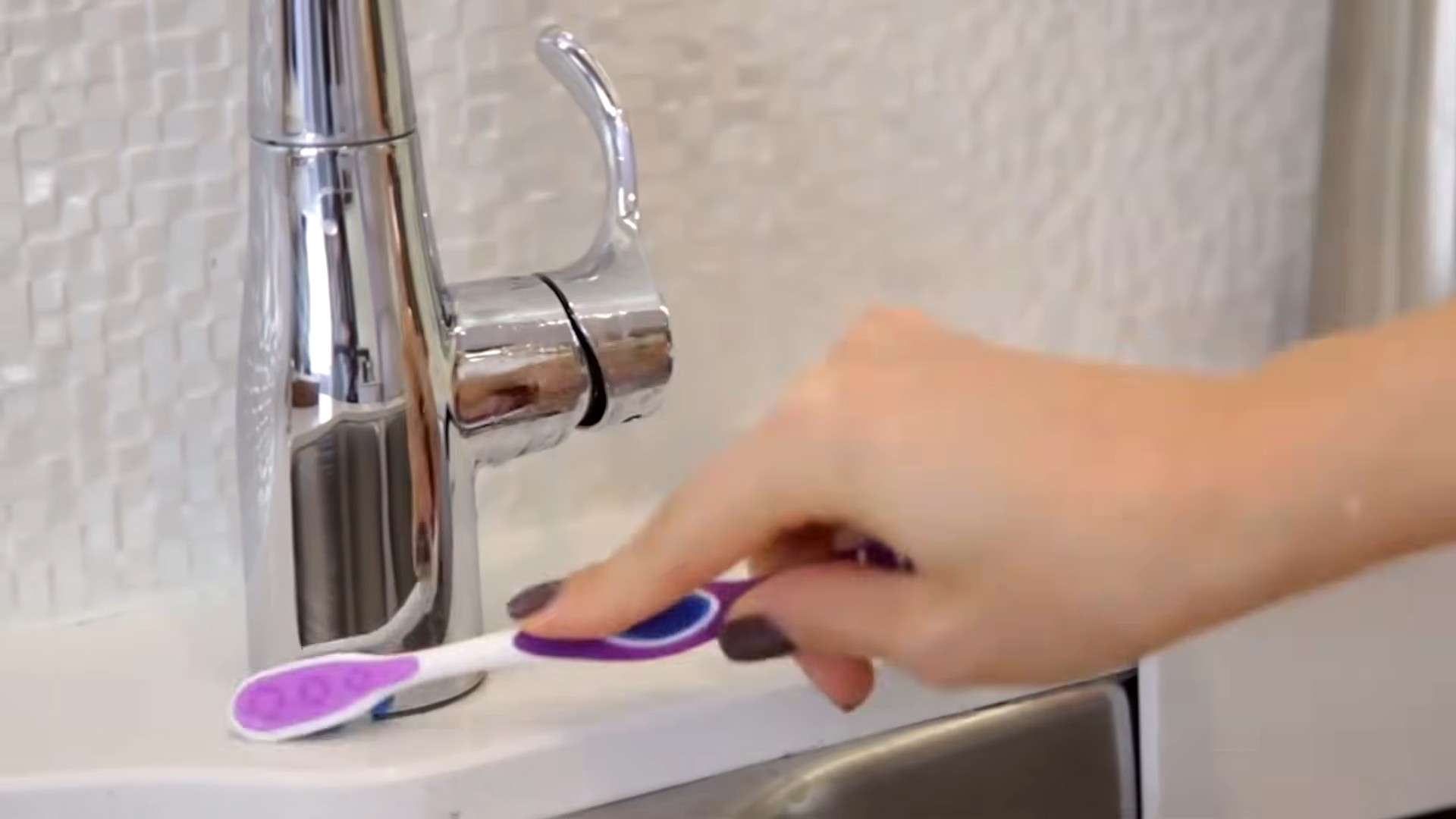
Upcycling Old Toothbrushes: A DIY Guide to Creative Reuse
Hey there, fellow DIY enthusiasts! I’m always on the lookout for ways to reduce waste and give new life to everyday items. And guess what? That old toothbrush you’re about to toss? It’s a goldmine of potential! Instead of contributing to landfill clutter, let’s transform those bristles into something useful and fun. I’ve compiled a list of my favorite ways to upcycle old toothbrushes, complete with detailed instructions so you can follow along. Let’s get started!
Cleaning Powerhouses: Repurposing for a Sparkling Home
Old toothbrushes are fantastic for getting into those nooks and crannies that are hard to reach with larger cleaning tools. The small head and sturdy bristles make them perfect for detail work.
Cleaning Grout
Grout can be a real pain to clean, but an old toothbrush makes the job much easier.
1. Gather your supplies: You’ll need your old toothbrush, some grout cleaner (store-bought or a homemade solution of baking soda and water), and a damp cloth.
2. Apply the cleaner: Apply the grout cleaner directly to the grout lines. Let it sit for a few minutes to loosen the grime. For a baking soda paste, mix baking soda with a little water until you get a thick consistency.
3. Scrub away! Use the toothbrush to scrub the grout lines vigorously. The bristles will get into the pores and lift away the dirt and mildew.
4. Wipe clean: Use a damp cloth to wipe away the cleaner and loosened dirt. You might need to rinse the cloth and repeat this step a few times to remove all the residue.
5. Admire your sparkling grout: Step back and admire your freshly cleaned grout! You’ll be amazed at the difference.
Detailing Faucets and Fixtures
Those hard-to-reach areas around faucets and fixtures can accumulate grime and mineral deposits. An old toothbrush is perfect for tackling these spots.
1. Gather your supplies: You’ll need your old toothbrush, some all-purpose cleaner or vinegar, and a damp cloth.
2. Apply the cleaner: Spray the cleaner or vinegar onto the area you want to clean. Let it sit for a few minutes to loosen the grime.
3. Scrub the details: Use the toothbrush to scrub around the base of the faucet, the handles, and any other crevices.
4. Rinse and wipe: Rinse the area with water and wipe clean with a damp cloth.
5. Enjoy the shine: Your faucets and fixtures will look brand new!
Cleaning Small Appliances
Toasters, blenders, and other small appliances often have hard-to-clean areas. A toothbrush can help you get into those tight spaces.
1. Unplug the appliance: Safety first! Always unplug the appliance before cleaning it.
2. Gather your supplies: You’ll need your old toothbrush, some dish soap, and a damp cloth.
3. Apply soapy water: Dip the toothbrush in soapy water and use it to scrub any crumbs, spills, or grime from the appliance.
4. Rinse and wipe: Rinse the area with a damp cloth and dry thoroughly.
5. Enjoy a clean appliance: Your appliance will be sparkling and ready to use.
Beauty and Grooming Hacks: Toothbrush Transformations
Believe it or not, old toothbrushes can also be repurposed for beauty and grooming tasks. Just make sure to thoroughly clean and sanitize them before using them on your face or body.
Exfoliating Lips
Dry, chapped lips? An old toothbrush can gently exfoliate them.
1. Clean your toothbrush: Thoroughly clean your old toothbrush with soap and water.
2. Apply lip balm: Apply a generous layer of lip balm to your lips.
3. Gently exfoliate: Use the toothbrush to gently scrub your lips in small, circular motions.
4. Wipe clean: Wipe away any excess lip balm and dead skin with a damp cloth.
5. Apply more lip balm: Apply another layer of lip balm to moisturize your newly exfoliated lips.
Taming Eyebrows
Keep your eyebrows looking neat and tidy with an old toothbrush.
1. Clean your toothbrush: Thoroughly clean your old toothbrush with soap and water.
2. Apply hairspray (optional): Lightly spray the toothbrush with hairspray for extra hold.
3. Brush your eyebrows: Use the toothbrush to brush your eyebrows into the desired shape.
4. Set the shape: The toothbrush will help to tame stray hairs and keep your eyebrows looking groomed.
Cleaning Nail Art Tools
Nail art brushes and tools can get clogged with polish and glitter. An old toothbrush is perfect for cleaning them.
1. Gather your supplies: You’ll need your old toothbrush, some nail polish remover, and a clean cloth.
2. Dip the toothbrush in nail polish remover: Dip the toothbrush in nail polish remover.
3. Scrub the tools: Use the toothbrush to scrub the nail art brushes and tools, removing any remaining polish or glitter.
4. Wipe clean: Wipe the tools clean with a clean cloth.
5. Let them dry: Allow the tools to dry completely before storing them.
Crafting and DIY Projects: Unleash Your Creativity
Old toothbrushes can also be used in a variety of crafting and DIY projects. Their bristles can be used for painting, texturing, and more.
Creating Splatter Paint Effects
Add a unique splatter effect to your paintings or crafts with an old toothbrush.
1. Gather your supplies: You’ll need your old toothbrush, paint, paper or canvas, and a container of water.
2. Dip the toothbrush in paint: Dip the toothbrush in paint.
3. Create the splatter effect: Hold the toothbrush over your paper or canvas and run your finger along the bristles to create a splatter effect. Experiment with different amounts of paint and different distances to achieve different effects.
4. Clean the toothbrush: Rinse the toothbrush in water to remove any remaining paint.
5. Let your artwork dry: Allow your artwork to dry completely.
Texturing Clay or Dough
Add texture to clay or dough projects with an old toothbrush.
1. Prepare your clay or dough: Prepare your clay or dough according to the instructions.
2. Press the toothbrush into the clay or dough: Press the bristles of the toothbrush into the clay or dough to create a textured surface.
3. Experiment with different patterns: Experiment with different angles and pressures to create different patterns.
4. Bake or air dry: Bake or air dry your project according to the instructions.
Cleaning Jewelry
Keep your jewelry sparkling with a gentle scrub from an old toothbrush.
1. Gather your supplies: You’ll need your old toothbrush, some mild dish soap, warm water, and a soft cloth.
2. Mix soapy water: Mix a few drops of dish soap with warm water.
3. Dip the toothbrush in soapy water: Dip the toothbrush in the soapy water.
4. Gently scrub the jewelry: Gently scrub your jewelry with the toothbrush, paying attention to any crevices or areas with dirt buildup.
5. Rinse thoroughly: Rinse the jewelry thoroughly with warm water.
6. Dry with a soft cloth: Dry the jewelry with a soft cloth.
Gardening Helpers: Toothbrushes in the Garden
Even in the garden, old toothbrushes can be surprisingly useful.
Cleaning Plant Leaves
Dust and dirt can accumulate on plant leaves, hindering their ability to photosynthesize. A gentle cleaning with a toothbrush can help.
1. Gather your supplies: You’ll need your old toothbrush, a bowl of water, and a soft cloth.
2. Dip the toothbrush in water: Dip the toothbrush in water.
3. Gently clean the leaves: Gently brush the leaves of your plants with the toothbrush, removing any dust or dirt.
4. Wipe clean: Wipe the leaves clean with a soft cloth.
Cleaning Garden Tools
Keep your garden tools clean and free of dirt and debris with an old toothbrush.
1. Gather your supplies: You’ll need your old toothbrush, a bucket of water, and some soap (optional).
2. Dip the toothbrush in water: Dip the toothbrush in water.
3. Scrub the tools: Use the toothbrush to scrub your garden tools, removing any dirt or debris.
4. Rinse thoroughly: Rinse the tools thoroughly with water.
5. Dry completely: Allow the tools to dry completely before storing them.
Seed Starting
Use a toothbrush to gently separate seeds that are stuck together or to create small furrows in your seed starting trays.
1. Gather your supplies: You
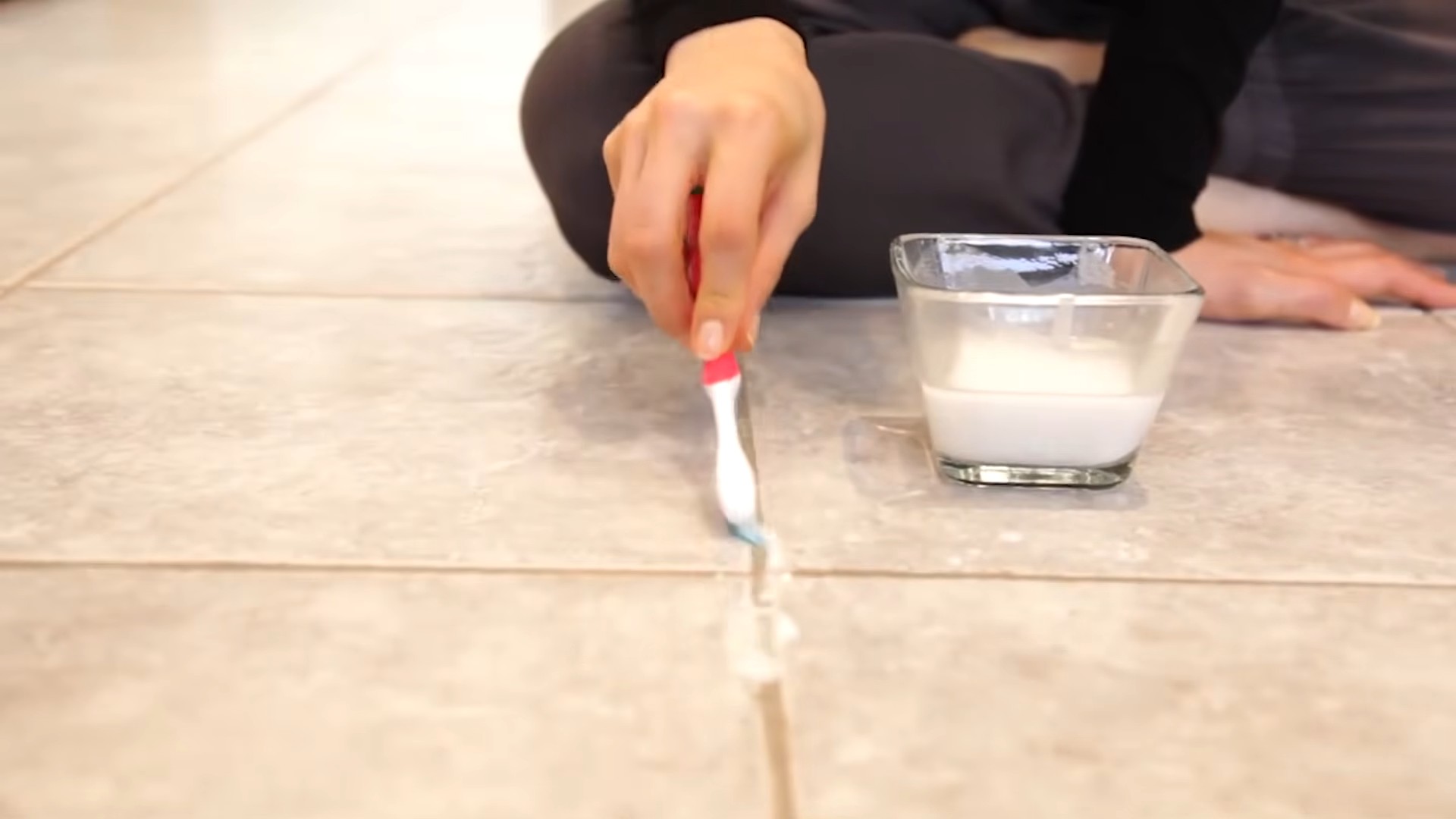
Conclusion
So, there you have it! Transforming your old toothbrushes into incredibly useful tools is not just a clever way to declutter; it’s a sustainable and surprisingly effective way to tackle a multitude of cleaning and crafting challenges. We’ve explored a range of applications, from grout scrubbing and jewelry polishing to intricate detailing in your art projects. The versatility of this simple DIY trick is truly remarkable.
Why is this a must-try? Because it’s economical, eco-friendly, and empowers you to repurpose something you’d normally discard. Think about it: instead of contributing to landfill waste, you’re giving your old toothbrush a second life, a new purpose, and saving money on specialized cleaning tools. Plus, the satisfaction of knowing you’re reducing your environmental footprint is a reward in itself.
But the possibilities don’t stop here! Feel free to experiment and adapt these ideas to suit your specific needs. For instance, if you’re dealing with particularly stubborn grime, try soaking your toothbrush in a solution of baking soda and vinegar before scrubbing. For delicate surfaces, use a toothbrush with softer bristles and a gentle touch. Crafters can explore different bristle angles and lengths to achieve unique textures and effects in their artwork. Consider using different colored toothbrushes to designate them for specific tasks – a blue one for bathroom cleaning, a green one for kitchen detailing, and so on. This will help prevent cross-contamination and keep things organized.
Don’t be afraid to get creative and think outside the box! Perhaps you can use an old toothbrush to clean your computer keyboard, remove lint from your clothing, or even groom your pet’s fur. The only limit is your imagination.
We wholeheartedly encourage you to try this DIY trick and discover the many ways an old toothbrush can simplify your life. It’s a small change that can make a big difference, both for your wallet and the planet. And most importantly, we want to hear about your experiences! Share your tips, tricks, and creative uses for old toothbrushes in the comments below. Let’s build a community of resourceful individuals who are committed to making the most of what they have.
So, grab that old toothbrush, put on your thinking cap, and get ready to be amazed by its hidden potential. You might just find that it becomes your new favorite cleaning and crafting companion. Remember, even the smallest actions can have a significant impact when we all work together to reduce waste and embrace sustainable practices. Let’s make the most of our resources and give those old toothbrushes a new lease on life!
Frequently Asked Questions (FAQ)
What types of toothbrushes are best for repurposing?
Any type of toothbrush can be repurposed, but some are better suited for certain tasks than others. Toothbrushes with softer bristles are ideal for delicate surfaces like jewelry or electronics, while those with firmer bristles are better for scrubbing tough grime in grout or on tires. Electric toothbrush heads can also be repurposed, especially for cleaning small, hard-to-reach areas. Consider the size and shape of the toothbrush head as well. Smaller heads are great for detail work, while larger heads can cover more surface area quickly.
How do I properly clean a used toothbrush before repurposing it?
Cleaning is crucial! Before repurposing any toothbrush, thoroughly clean it to remove any lingering toothpaste, bacteria, or debris. Start by rinsing the toothbrush under hot, running water for several minutes. Then, soak it in a solution of antibacterial soap and water for at least 30 minutes. You can also use a mixture of vinegar and water (1:1 ratio) for its disinfecting properties. After soaking, scrub the bristles with a clean brush or your fingers to dislodge any remaining particles. Finally, rinse the toothbrush thoroughly under hot water and allow it to air dry completely before using it for its new purpose. For electric toothbrush heads, detach them from the handle and follow the same cleaning procedure.
Are there any surfaces I should avoid cleaning with a repurposed toothbrush?
While toothbrushes are versatile, there are some surfaces you should avoid cleaning with them. Avoid using them on surfaces that are easily scratched, such as polished wood furniture or delicate fabrics. Also, be cautious when cleaning electronics, as excessive moisture can cause damage. Always use a dry or slightly damp toothbrush for electronics and avoid spraying cleaning solutions directly onto the device. Finally, never use a toothbrush that has been used for cleaning hazardous materials or chemicals for any other purpose.
How can I sanitize a toothbrush after using it for cleaning something potentially dirty?
After using a toothbrush for cleaning tasks that involve dirt, grime, or potentially harmful substances, it’s essential to sanitize it thoroughly. One effective method is to soak the toothbrush in a solution of bleach and water (1 tablespoon of bleach per gallon of water) for 10-15 minutes. Be sure to wear gloves and eye protection when working with bleach. Alternatively, you can boil the toothbrush in water for a few minutes to kill bacteria. However, be aware that boiling may damage the bristles over time. After sanitizing, rinse the toothbrush thoroughly under hot water and allow it to air dry completely.
Can I use a repurposed toothbrush for food-related tasks?
While it’s generally not recommended to use a toothbrush that has been used for cleaning non-food items for food-related tasks, you can dedicate a separate, thoroughly cleaned toothbrush specifically for food preparation. For example, you can use a toothbrush to clean mushrooms, scrub potatoes, or apply glazes to pastries. However, it’s crucial to ensure that the toothbrush is meticulously cleaned and sanitized before and after each use to prevent the spread of bacteria. It’s also a good idea to replace the toothbrush frequently to maintain hygiene.
How often should I replace my repurposed toothbrushes?
The lifespan of a repurposed toothbrush depends on how frequently it’s used and the types of tasks it’s used for. If you’re using a toothbrush for heavy-duty cleaning tasks, such as scrubbing grout or cleaning tires, it may wear out more quickly than if you’re using it for delicate tasks like polishing jewelry. As a general rule, replace your repurposed toothbrushes every 2-3 months, or sooner if the bristles become frayed, worn, or discolored. Regularly inspect your toothbrushes for signs of wear and tear and replace them as needed to ensure optimal performance and hygiene.
What are some creative crafting uses for old toothbrushes?
Old toothbrushes can be surprisingly versatile tools for crafting. Use them to create splatter paint effects, apply glue to small areas, or blend colors in watercolor paintings. The bristles can also be used to create unique textures in clay or other modeling materials. Cut the bristles at different angles to create custom brushes for specific effects. You can even use the toothbrush handle as a sculpting tool or a makeshift palette knife. Let your imagination run wild and experiment with different techniques to discover the many creative possibilities of repurposed toothbrushes.
How can I dispose of repurposed toothbrushes responsibly?
Even repurposed toothbrushes eventually need to be disposed of. Unfortunately, most toothbrushes are made of plastic and are not easily recyclable. However, some companies offer toothbrush recycling programs. Check with your local waste management provider or search online for toothbrush recycling options in your area. Alternatively, you can explore creative ways to further repurpose the toothbrush handle, such as using it as a plant marker or a small tool handle. By taking these steps, you can minimize the environmental impact of your old toothbrushes and contribute to a more sustainable future.

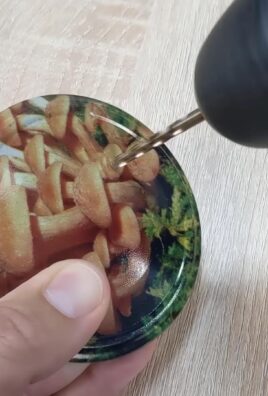
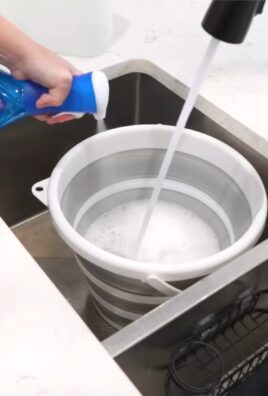
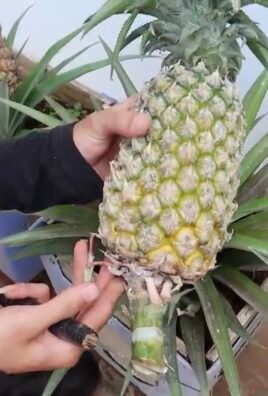
Leave a Comment